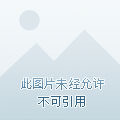Reviewed by: Liu Min (Third Xiangya Hospital, Central South University)
Author: Peng Yonghan (Shanghai Changhai Hospital)
Many friends pay great attention to the prevention of kidney stones through diet, and come to ask the doctor if they can eat tofu? When it comes to tofu, I can't help but think of delicious fried tofu, mapo tofu, stinky tofu... However, some people say that tofu cannot be touched, and they think that "eat less tofu and less raw stones" How did the softest tofu and the stone of the most rigid become a gang?

Image source: Stand Cool Helo
To make a long story short, everything in this world comes from various combinations of the periodic table. As a social activist, the "calcium" element is found in soybeans, the raw material of tofu. Coincidentally, about 80% of kidney stones are composed of a component called "calcium oxalate", and most of the people with this stone have a high concentration of calcium in their urine.
Anti-tofu people believe that eating tofu is not eating calcium tablets, more calcium in the body, more calcium is excreted in the urine, and the risk of kidney stones comes. Therefore, "eat less tofu and less raw stones" sounds very reasonable at first glance, so many people believe it.
However, we don't eat anything and grow. The subtlety of the human body structure is that eating more does not mean absorbing more. When tofu enters the gastrointestinal tract, it is digested and decomposed into "calcium" ions, which are absorbed into the human body from the intestine. In the intestine, a large number of "calcium" ions will bind to "oxalic acid", "citric acid", "fatty acids", etc., while only a very small amount of "calcium" ions are excreted from the urine under the regulation of hormones and kidneys.
It can be seen that under the arrangement of this mechanism, it is more difficult for free "calcium" ions in the urine to form stones. Looking at the calcium content of tofu, two or two tofu contains about 150 mg of calcium. Even if you eat tofu every day, the effect on the calcium concentration in the urine is not large!
1, also rich in calcium, milk will even reduce the risk of kidney stones
Some foreign studies also support this view. However, Westerners are not studying tofu but milk, 100 ml of milk contains about 120 mg of calcium, which is similar to the calcium content of two or two tofu, so will drinking more milk increase the risk of stones?
Studies have shown that not only does not increase, drinking more milk will reduce the risk of calcium-containing kidney stones, while deliberate low-calcium diets or additional calcium supplements will increase the risk of kidney stones [1].
Of course, milk can not be equated with Chinese tofu, but in general, there is no reliable evidence that "eating less tofu will cause fewer stones", and it may be beneficial to eat something appropriately.
2. Patients with high urinary calcium may eat less tofu
However, in pathological conditions, the concentration of calcium ions in the urine will be abnormally elevated, which will increase the risk of calcium supersaturation leading to kidney stones. The development of hypercalciuria is a disease, and the daily urinary calcium excretion is more than 200 mg, which is indeed the most common metabolic abnormality in patients with calcium-containing kidney stones. Therefore, people who are worried about tofu may wish to go to the hospital to check whether there is such a high calcumuria. If so, then really don't eat it.
All in all, tofu does not bear the charge of stones. Because eating tofu produces stones, it is not just tofu.
bibliography
[1]. Taylor E N, Curhan G C.Dietary calcium from dairy and nondairy sources, and risk of symptomatic kidney stones[J]. The Journal of urology, 2013, 190(4): 1255-1259.
*The content of this article is a popularization of health knowledge and cannot be used as a specific diagnosis and treatment recommendation, nor is it a substitute for face-to-face consultation by a practicing physician, for reference only.
*The copyright of this article belongs to Tencent Medical Code, unauthorized media reprinting is prohibited, and illegal reprinting will be investigated for legal responsibility according to law. Individuals are welcome to forward to the circle of friends.